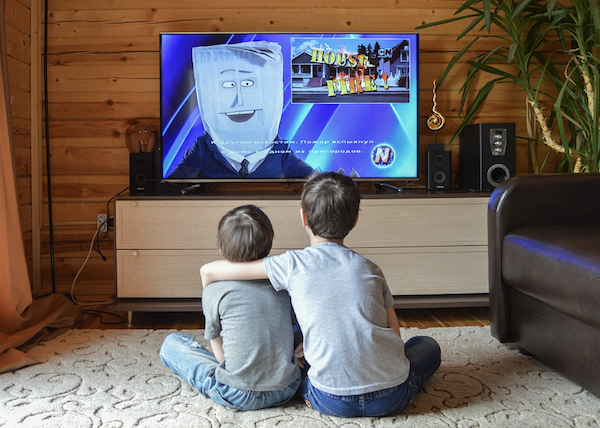 Credit: pixabay
Credit: pixabay
It's a question most parents find themselves asking—either before their child is born or shortly after: how much screen time is too much? How much time should children be allowed to spend watching cartoons, playing tablet or console games, or using a computer?
As a parent of two boys - aged two and a half and almost seven - I've been navigating this challenge myself. We live in a digital world, where shielding children from screens altogether is unrealistic, especially when we, as adults, spend a significant amount of time on devices ourselves. But while eliminating screens isn't feasible, setting clear boundaries around their use certainly is.
It starts with leading by example - demonstrating to our children that we, too, can put down our phones and disconnect. Screen time guidelines vary depending on a child's age setting limits based on developmental needs is key. A few months ago, during a check-up with a neurologist for my older son, the doctor recommended limiting daily screen time to just a few hours and avoiding any screen exposure in the hours leading up to bedtime.
Global Guidelines on Screen Time
International health organisations have established guidelines to help parents navigate screen time for children. The World Health Organization (WHO) recommends:
- infants (under one year): No sedentary screen time;
- children aged 2-4 years: No more than one hour of sedentary screen time per day; less is better.
These recommendations emphasise the importance of physical activity and quality sleep for healthy development.
Similarly, the American Academy of Pediatrics advises:
- children under 18 months: Avoid screen media other than video chatting;
- children 18-24 months: Introduce digital media only with high-quality programming and co-viewing;
- children aged 2-5 years: Limit screen use to one hour per day of high-quality programming, with co-viewing.
For children aged six and older, consistent limits on screen time are recommended, ensuring they do not interfere with sleep, physical activity or other essential behaviours.
Impact of Excessive Screen Time
Excessive screen time has been linked to various developmental issues in children. A study published in the Journal of the American Medical Association (JAMA) Pediatrics found that preschoolers who spent more than an hour per day on screens without parental involvement showed reduced development in brain white matter, which is associated with language and literacy skills.
Moreover, increased screen time can lead to sleep disturbances, reduced physical activity and behavioural problems. The Canadian Paediatric Society notes that excessive screen use can displace important activities such as play, interaction with caregivers and sleep.
Luxembourg's Approach to Screen Time in Schools
Recognising the challenges posed by digital overuse, Luxembourg's Ministry of Education, Children and Youth has implemented measures to regulate smartphone use in public schools. Starting from Tuesday 22 April 2025, smartphones and similar devices are banned throughout the school day in primary schools, including during breaks and extracurricular activities. Exceptions are made only for educational purposes under teacher supervision or for medical reasons.
In secondary schools, from Monday 2 June 2025, students are required to keep smartphones away during lessons. Each school will develop its own charter outlining specific rules, in consultation with the school community.
Education Minister Claude Meisch emphasised the importance of these measures, stating, "Spending hours on a phone cannot be good for young people." He acknowledged that while the policy alone won't solve digital overuse, it's a step towards addressing a broader societal challenge.
International Perspectives
Other countries are also taking steps to address screen time among children.
A report commissioned by French President Emmanuel Macron suggests that children (in France) should not use smartphones before the age of thirteen and restrict access to social media platforms until eighteen. The report highlights the harmful effects of screens on children's development, including attention and sleep disturbances.
Since 2018, France has prohibited the use of mobile phones in primary and secondary schools for students aged three to fifteen. This ban extends beyond classrooms to include recess and extracurricular activities, aiming to enhance student focus and reduce distractions.
In Italy, a ministerial decree bans mobile phone use in classrooms from pre-school through secondary school, even for educational purposes, unless required for individualised education or students with disabilities.
In February 2025, Brazil enacted a law restricting smartphone use in primary and secondary schools. The legislation permits phone usage only during emergencies, for educational purposes or for students with disabilities, aiming to foster better learning environments.
China has implemented a ban on mobile phone use in classrooms across all primary and secondary schools in Shandong province since 2018. In 2021, the country extended this policy nationwide, requiring written parental consent for students to bring phones to school.
As of April 2024, New Zealand enforces a nationwide ban on cellphone use in schools, including during breaks. Exceptions are made for health reasons, disabilities or specific educational tasks, with the goal of improving academic performance and social interaction.
What Parents Think: Shifting Attitudes
Parents themselves are increasingly aware of the importance of balanced screen use. According to an OECD report from 2023, more than 60% of parents across member countries expressed concern over the impact of excessive screen time on their children's sleep, physical activity and social skills. At the same time, 70% admitted to struggling with their own screen habits in front of their children—illustrating how parental behaviour directly influences children's routines.
A 2024 UNICEF survey, conducted across five European countries, found that nearly half of parents supported full bans on smartphones during the school day, while a majority advocated for formal lessons on digital wellbeing to be included in national education systems.
These findings reflect a growing consensus: screen time is no longer just a family issue - it's a shared societal responsibility. By creating consistent boundaries at home, implementing school-level policies and promoting digital education, families and institutions can work together to raise a generation that is not only tech-savvy, but also self-aware and resilient in the digital age.
Reflecting on my own childhood and school years in the late 1990s and early 2000s, the first interactive form of entertainment was television, followed by game consoles, handheld Tetris devices and other simple electronics. I got my first computer at the age of ten, which I shared with my parents - and when they weren't home, I could easily spend the entire day on it. A personal mobile phone came years later, used mainly for communication and offering only a few basic games. Today, children are growing up in a world of smartphones with full internet access, offering countless digital "toys" and distractions - bringing with them an entirely new set of challenges for parents.
Navigating screen time for children is a complex task in this digital era. While technology provides undeniable educational and entertainment value, setting healthy boundaries is essential for supporting children's development. By drawing on international recommendations, establishing clear rules at school and maintaining open communication at home, we can guide the next generation toward balanced and mindful digital habits.









